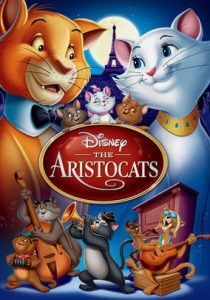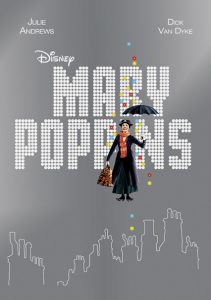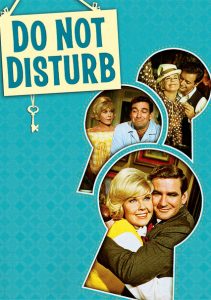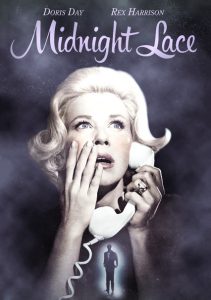The Aristocats-1970
Director Wolfgang Reitherman
Starring Various voices
Top 250 Films #241
Scott’s Review #570
Reviewed December 29, 2016
Grade: B+
The golden age of Disney films mainly occurred before the release of this film, The Aristocats is a latter-day Disney film, released in 1970- the first release since Walt Disney’s death in 1966.
It is a darling story with a very cute subject matter- cats living in sophisticated Paris face peril from their butler.
Like many Disney works, the film’s message pertains to the treatment of animals. The Aristocats is much safer fare than the dark Bambi or even Dumbo, but it is a fantastic film worth watching.
Glamorous and elegant retired opera star, Madame Adelaide Bonfamille, lives peacefully with her gorgeous mother cat, Duchess, and her three kittens, Marie, Berlioz, and Toulouse in the heart of Paris, circa 1910.
They are sophisticated beyond measure and enjoy every luxury known to cats, and are accompanied in their estate by English butler, Edgar.
One day while Madame is discussing her will with her attorney, Edgar learns that she plans to leave her entire estate to her cats, until their death, then all goes to Edgar.
Filled with greed, Edgar plots to kill the cats. This leads to an adventure in the country as the accosted cats attempt to find their way back home to Madame, with the help of feral yet kindly cat friends.
Ever so sweet to the film is the burgeoning romance that erupts between Duchess and Thomas O’Malley, as he aids the cats in returning to Paris. It is the classic girl from high class, who meets the bad boy from the wrong side of the tracks- only cat style.
The chemistry is readily apparent between the pair and, on a personal note, my female cat Thora certainly seemed smitten with Thomas O’Malley as she sat smiling at Thomas while she watched the film.
During their adventure, Thomas and Duchess manage to dance and sing along with Thomas’s best friend Scat Cat, who leads a Jazz band of alley cats- this makes the film light and lively in tone. The group also shares adventures with English geese, Abigail and Amelia Gabble, who share a fondness for style and a prim and proper manner.
Throughout it all, the group continues to be pursued by Edgar, who is portrayed more as a bumbling villain than a sinister one, making The Aristocats a fun film rather than anything too heavy or sinister.
The sophistication of the film is really what makes me enjoy it so much. The high style of the Parisian city blocks, Madame’s gorgeous mansion, and the beautifully drawn French countryside are my favorite elements.
I love the contrasts in this film- the city and the country. The high-brow characters meet the more blue-collar ones, but in the end, everyone comes together to conquer the mischievous foe.
Whereas in Bambi man is the serious enemy, in The Aristocats, Edgar is more of a buffoon than a truly dangerous element. He is cartoon-like (no pun intended), and the film is more of a caper with hi-jinks than of true danger.
For the cat lovers in all of us, The Aristocats is a delightful film with a nice message and a wonderful cultural experience.
Who can forget the fantastic theme song, “Ev’rybody Wants to Be a Cat”?



